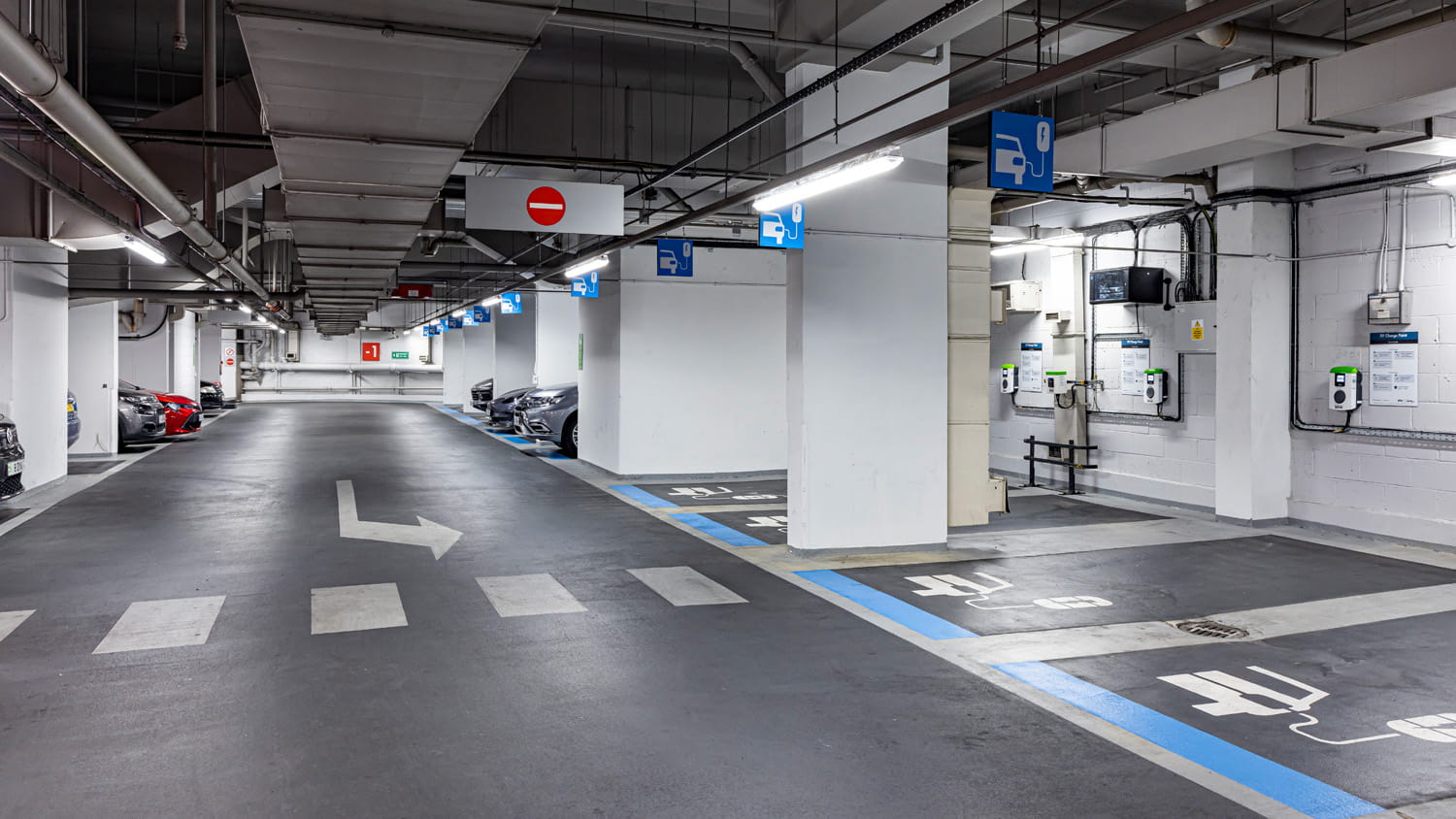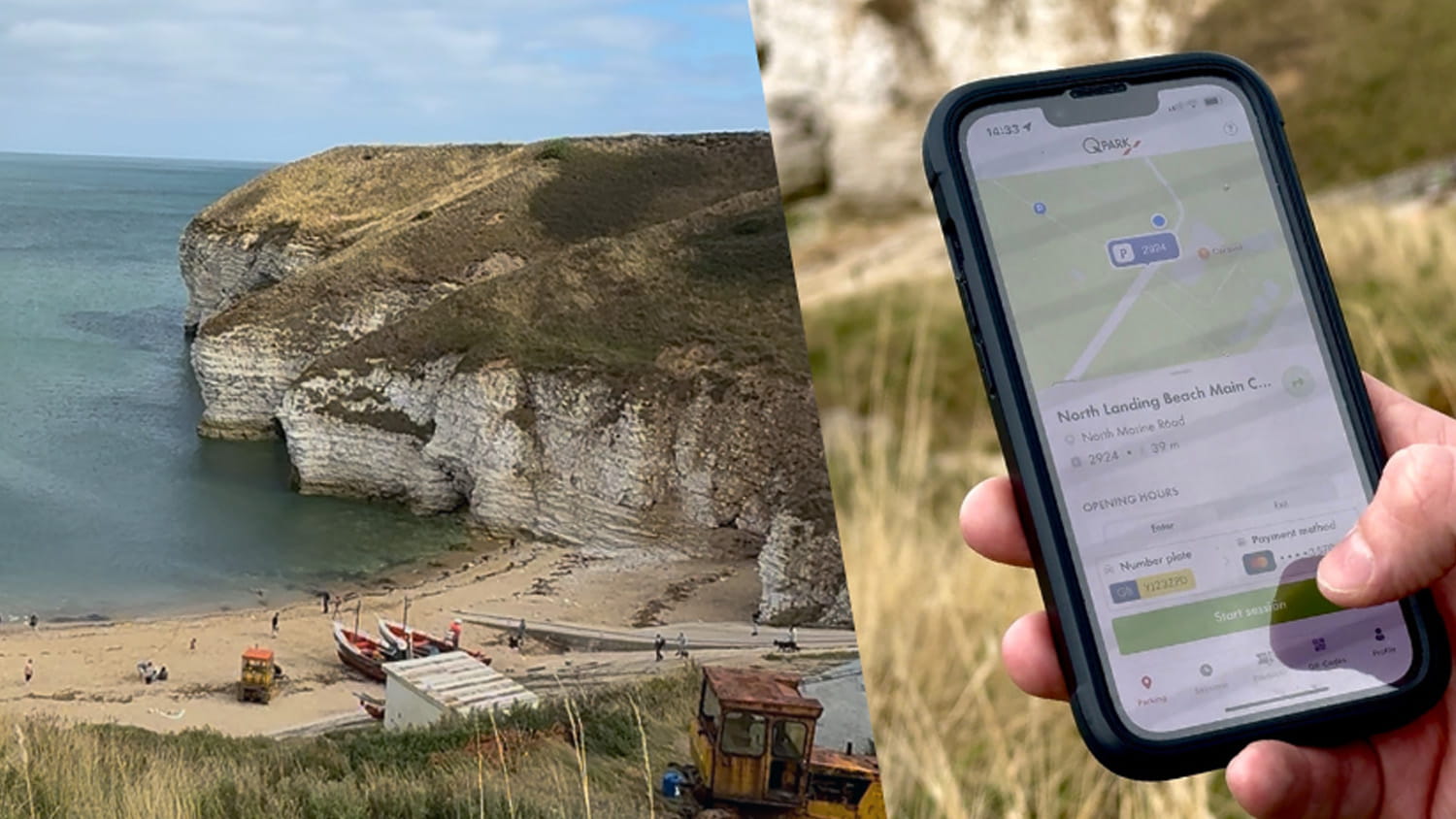
| Q-Park are thrilled to be able to announce that the Q-Park app can now be used to pay for parking at Pay & Display car parks operated by Britannia Parking across the UK.
Read more
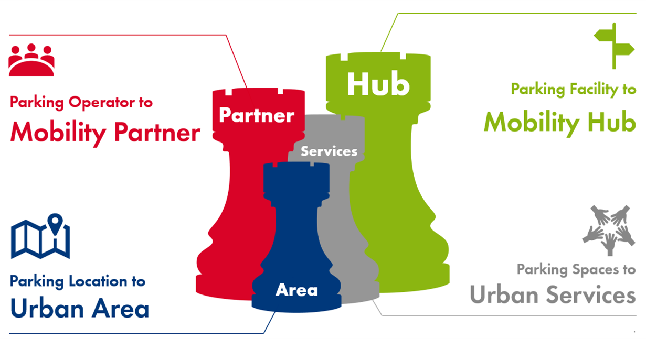
Prompted by the European Union’s Green Deal and national government directives, many metropolitan areas and cities have adopted a sustainability agenda. The vision and plans set out encompass a wide range of environmental targets.
Multi-disciplinary teams, representing the multiple policy areas involved, are working to translate the new agenda into sustainable urban mobility plans (SUMPs). The aim is to move towards future-proof sustainable and more user-centric urban mobility for the convenience of residents, commuters and visitors alike.
In the long run, sustainable urban mobility will benefit the entire community as infrastructure is improved and movements in and around cities become more efficient. The knock-on effects, including more active mobility, lower emissions and greener urban areas, will also benefit public health and welfare.
Having analysed over one hundred city specific sustainable urban mobility plans in various countries, Q-Park’s sustainable mobility experts have noticed a trend to set targets and draw up plans that:
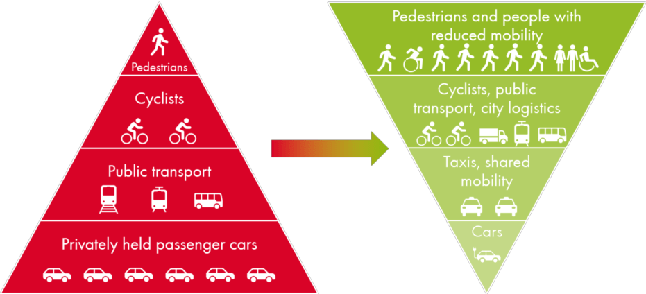
Throughout Europe, there’s a shift in the sustainability agenda. Personal mobility remains an important economic driver. However, as the need for sustainable mobility increases, the focus is now shifting:
When you, as urban mobility planner, step back and take a wider perspective on mobility, you may start to consider mobility and transport in urban areas as a whole. Rather than planning and making provisions for the different modes of public and private transport separately, it makes sense to combine them – city wide!
As you consider the network of bus and tram stops, light rail and train stations, you can identify local hubs that people walk or cycle to. When you add passenger cars into the mix, the network also includes public and private car parks.
Here, we see areas emerging where people switch from one mode of transport to another. They are defined as Mobility Hubs. These are places where travellers switch between various modes of transport:
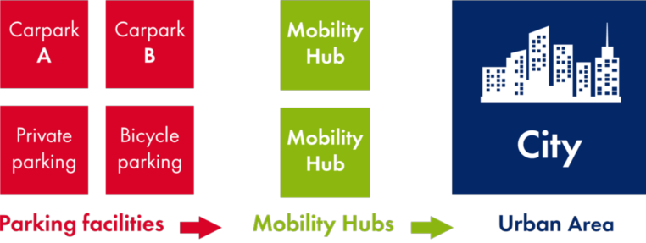
When the right mix of transport and facilities are brought together, a hub can contribute to reducing the percentage of distance travelled in private cars and increase the distance covered using public transport and active mobility.
When mobility hubs are strategically placed at the city ring, they contribute to inner-city carbon footprint reduction, cleaner air, less noise and better opportunities for moving around in liveable and economic centres. Encouraging motorists to leave their cars at the hub creates space in the city centre for more green areas, better public transport and good conditions for cyclists and pedestrians.
Services can be added to expand hub functionality:
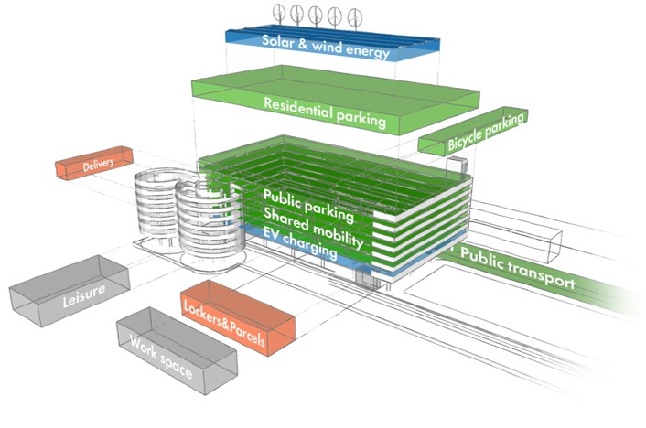
Q-Park understands the dilemmas you face. There are many players involved. You seek an equilibrium between the needs of residents, commuters and visitors and the economic function in the urban area.
You want to increase liveability in your metropolitan area by:
While at the same time, you want to:
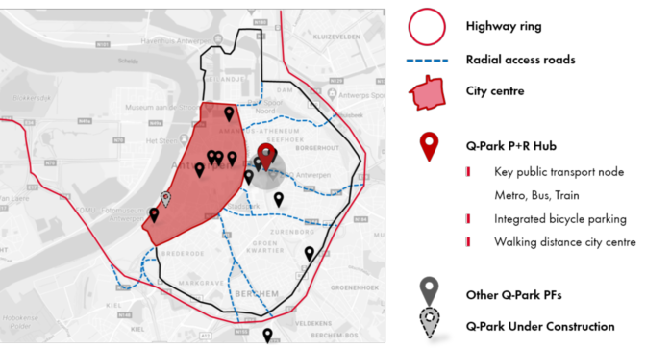
Q-Park is more than a car park operator, Q-Park moves you and your sustainable urban mobility plan (SUMP) forward.
As your mobility partner, Q-Park can help get your plans moving in the right direction and keep you on track. We have considerable knowledge and experience to guide you. Together, we will look for ways to make sustainable mobility successful. Measures we can help you introduce include:
Four reasons for partnering with Q-Park:
Q-Park has been instrumental in realising sustainable urban mobility hubs in various cities throughout Europe. We collaborate with urban mobility experts and contribute our knowledge and expertise to initiatives that work towards achieving the European Union's Green Deal objectives.
Together with municipal planning experts, we have built and transformed parking facilities into sustainable multifunctional mobility hubs.
By incorporating PV panels and/or wind turbines to generate power and by installing low-energy LED lighting and energy storage, our mobility hubs are sustainable, low- or zero-emission parking facilities while providing green energy for EV charging.

Q-Park has developed a parking capacity model that uses reference projects, car park occupancy data and KPI benchmarks to calculate the ideal parking capacity at a given location.

The Q-Park capacity modelling tool can help sustainable mobility planners calculate the ideal capacity of mobility hubs at various locations in the metropolitan area.
Q-Park is one of the three leading providers of parking facilities in West Europe, whether wholly-owned, leased, managed or in a hybrid business model. Q-Park is notable for its quality approach and has a portfolio comprising over 570,000 parking spaces in the Netherlands, Germany, Belgium, Great Britain, France, Ireland and Denmark.

